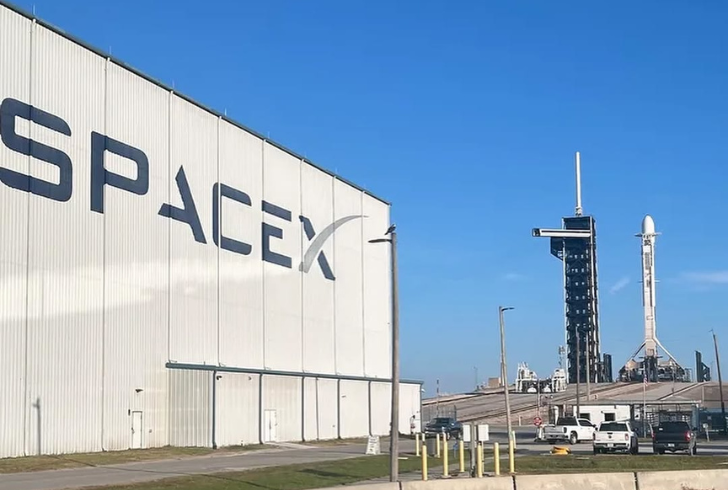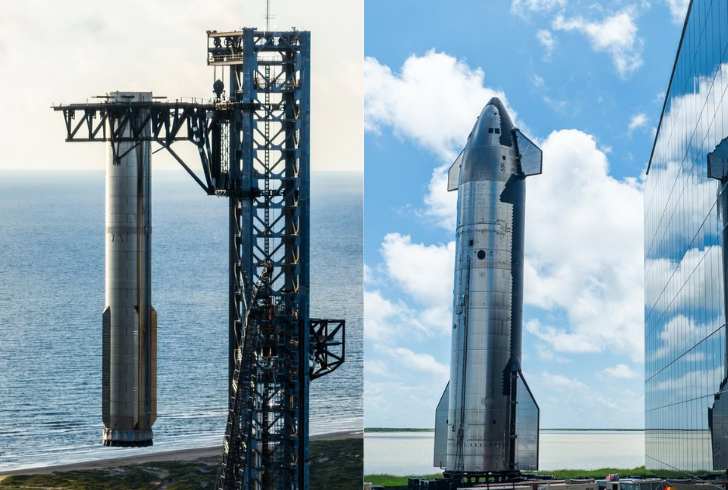SpaceX continues pushing the boundaries of space exploration with its latest test flight of Starship, its next-generation spacecraft designed for deep-space missions. However, while the company achieved a significant milestone by successfully catching the Super Heavy booster, the Starship upper stage encountered another failure, repeating past challenges.
A Step Forward and a Major Setback
On Thursday, SpaceX launched its eighth suborbital test flight of Starship from Starbase in Boca Chica Beach, Texas. The test featured the Starship upper stage (S34) mounted atop the powerful Super Heavy booster (B15). While the booster completed a controlled return and was successfully caught using the launch tower’s mechanical “chopsticks,” the upper stage faced a different fate.
After reaching space, Starship began spinning uncontrollably, lost communication, and ultimately disintegrated. Debris scattered back to Earth, marking another setback in SpaceX’s ambitious testing program.
SpaceX Responds to the Upper Stage Failure

Instagram | valuetainment | SpaceX acknowledged the test failure, emphasizing its value for future design improvements.
SpaceX acknowledged the failure in a statement, emphasizing that each test provides critical data to improve future designs.
"During Starship's ascending burn, the vehicle disassembled rapidly and lost communication. "Our team immediately began coordination with safety officials to implement pre-planned contingency responses," the organization said.
The company remains optimistic, stating that even failures contribute valuable lessons that enhance reliability.
FAA Orders Mishap Investigation
Following the incident, the Federal Aviation Administration (FAA) mandated a "mishap investigation" to determine the root cause and implement corrective actions. The FAA clarified that SpaceX must conduct a full analysis and submit a report before future flights can proceed.
"During the event, the FAA activated a Debris Response Area and briefly slowed aircraft outside the affected region," the agency stated. Normal flight operations have since resumed.
Testing Critical Systems and Starship’s Future Goals
Despite the upper stage failure, SpaceX incorporated several new test objectives into the flight:
1. Deploying Starlink simulators to test future satellite deployment.
2. Conducting multiple reentry experiments aimed at improving heat shielding.
3. Removing a set of heat-resistant tiles to study their impact on reentry dynamics.
4. Testing new structural fittings to enhance thermal resistance.
5. Experimenting with different metallic tile options for improved heat protection.
Although the full extent of the experiments' success remains unclear due to the vehicle’s premature loss, SpaceX continues refining Starship for eventual missions to the Moon, Mars, and beyond.
Super Heavy Booster’s Successful Catch Marks a Historic First

Instagram | spacex | Starship's upper stage faced a setback while the Super Heavy booster made history with a successful catch.
While the Starship upper stage suffered a setback, the Super Heavy booster achieved a historic milestone. The booster executed a controlled descent, slowing from supersonic speeds before being caught by the launch tower’s "chopstick" arms.
"Booster return will only take place if conditions are right," SpaceX stated, reaffirming its commitment to public and team safety.
The maneuver marks a crucial step toward achieving a fully reusable rocket system, which could significantly reduce spaceflight costs.
Learning from Failures
This latest test underscores SpaceX’s philosophy—learning through rapid iteration. By continuously testing real hardware in flight environments, the company accelerates innovation and problem-solving.
Although setbacks like the Starship upper stage failure pose challenges, the successful booster catch represents undeniable progress. As SpaceX refines its designs and incorporates lessons from each mission, Starship inches closer to becoming the workhorse of future space exploration.
Read full article